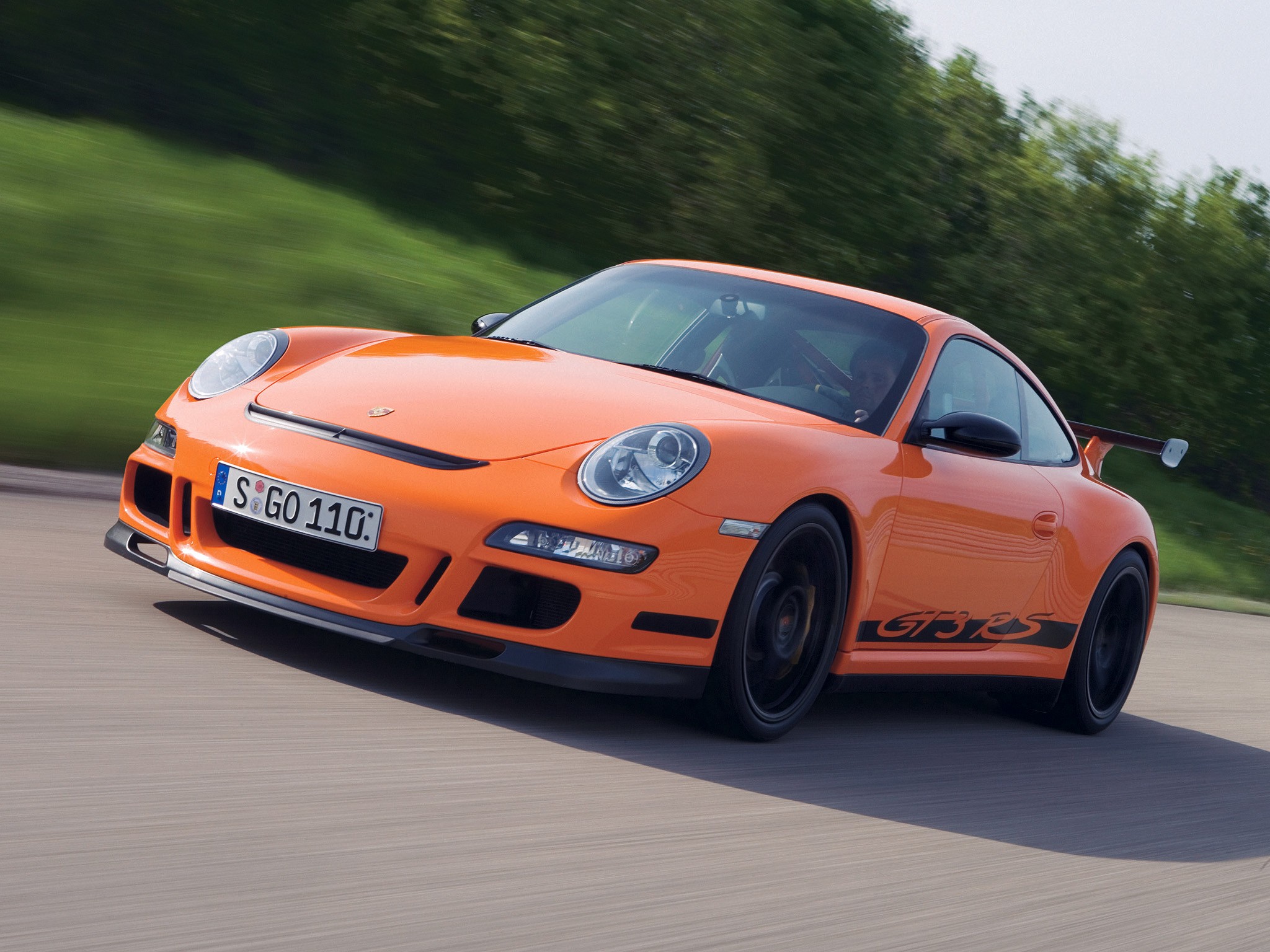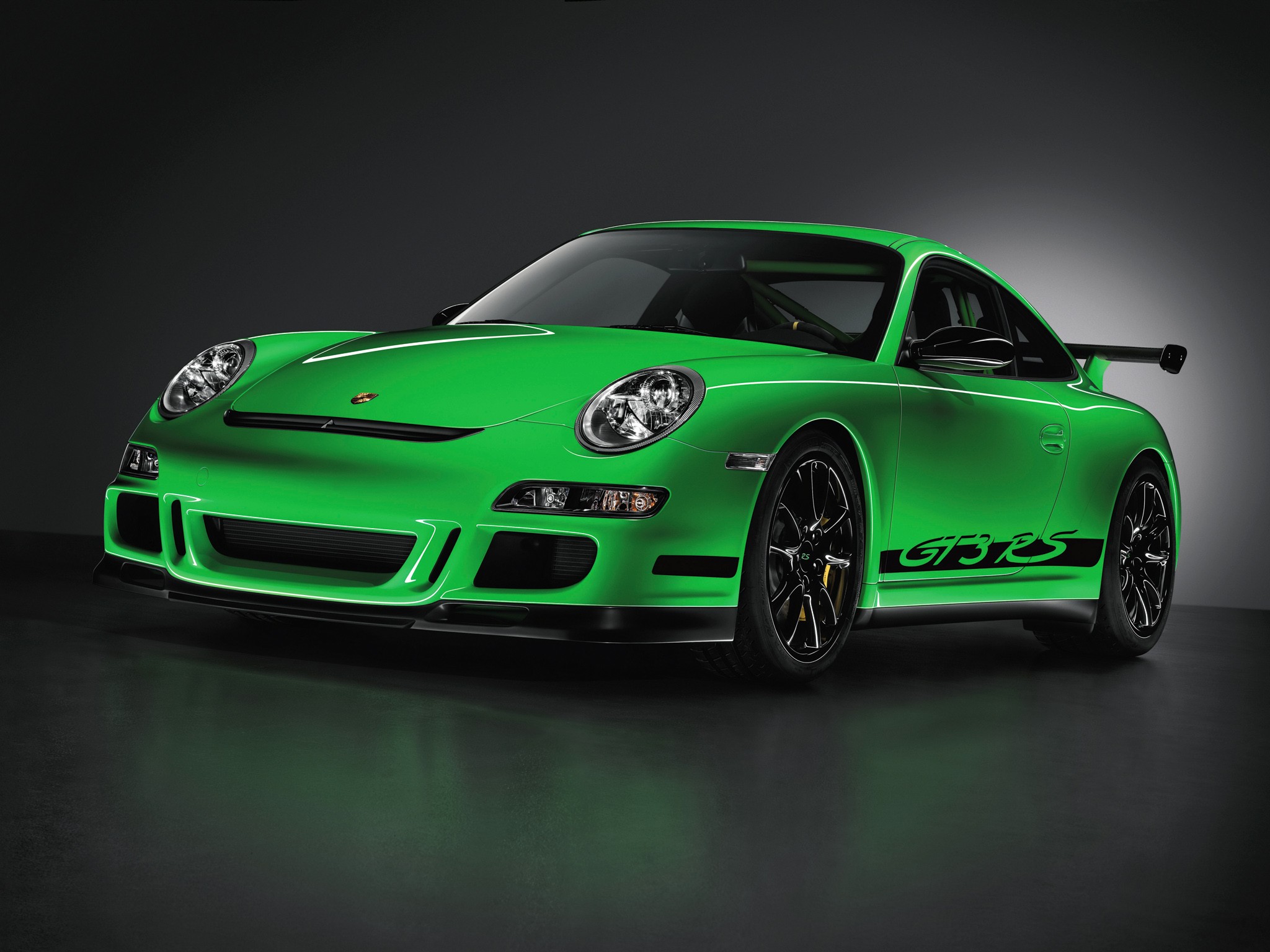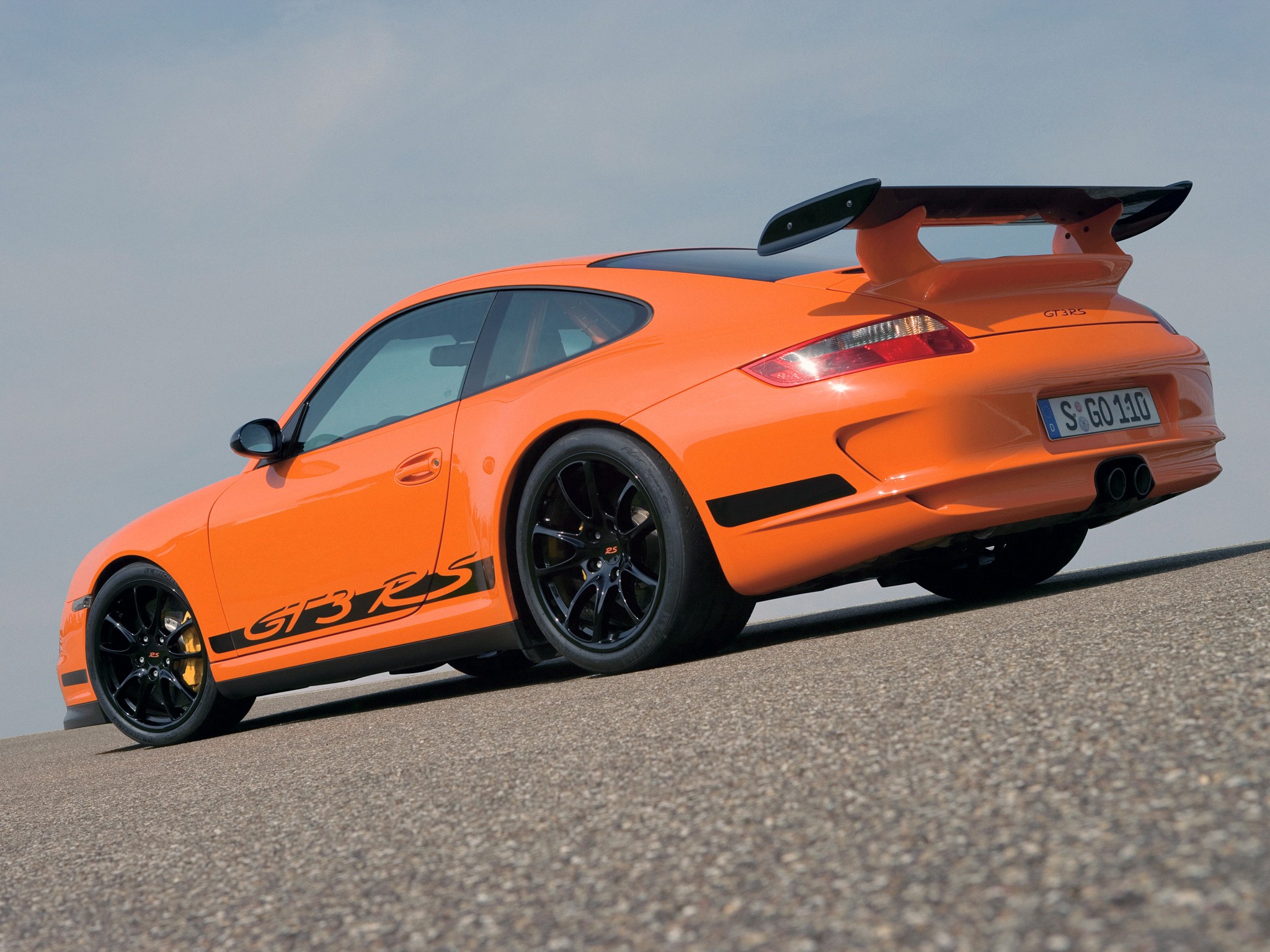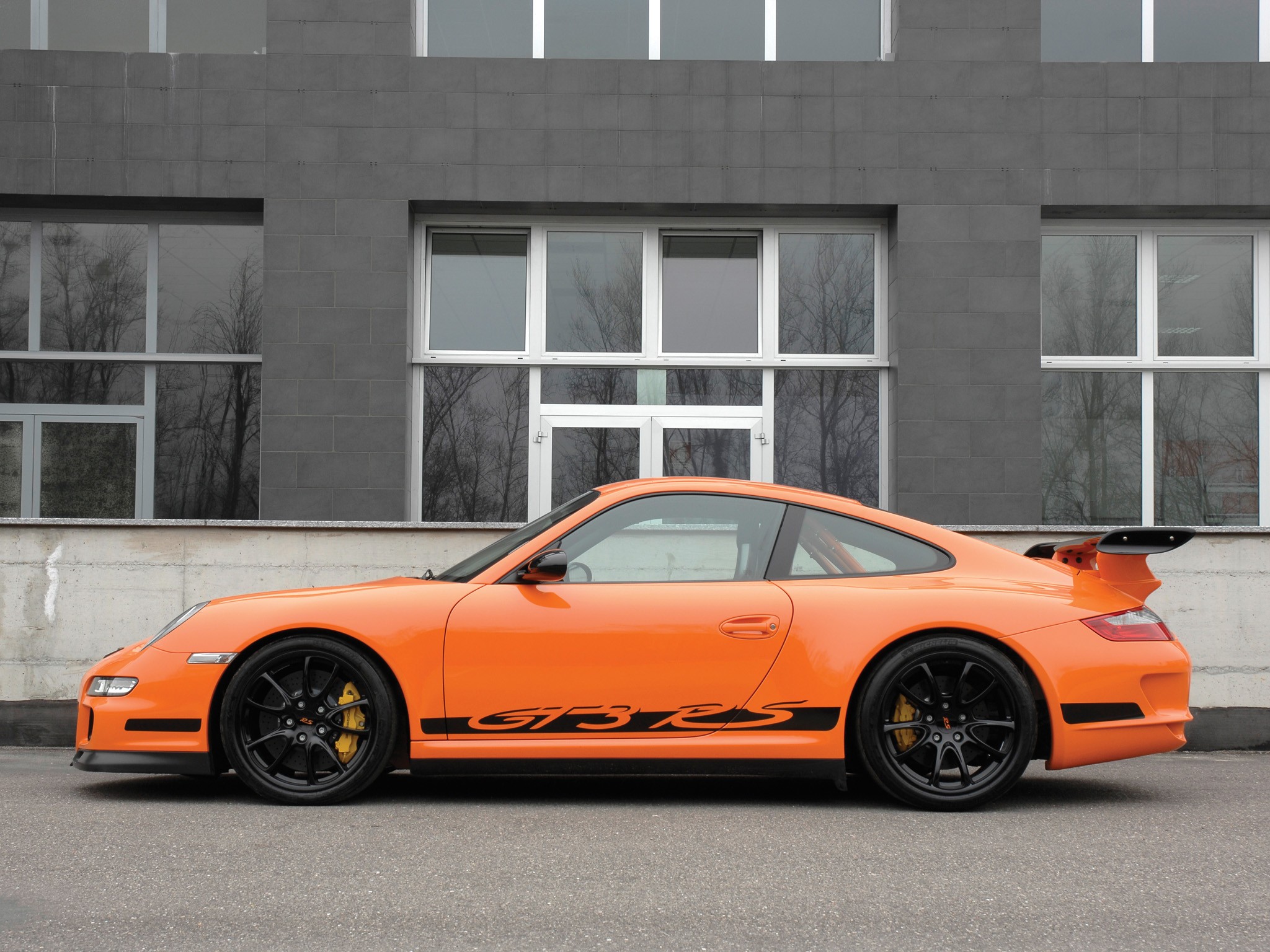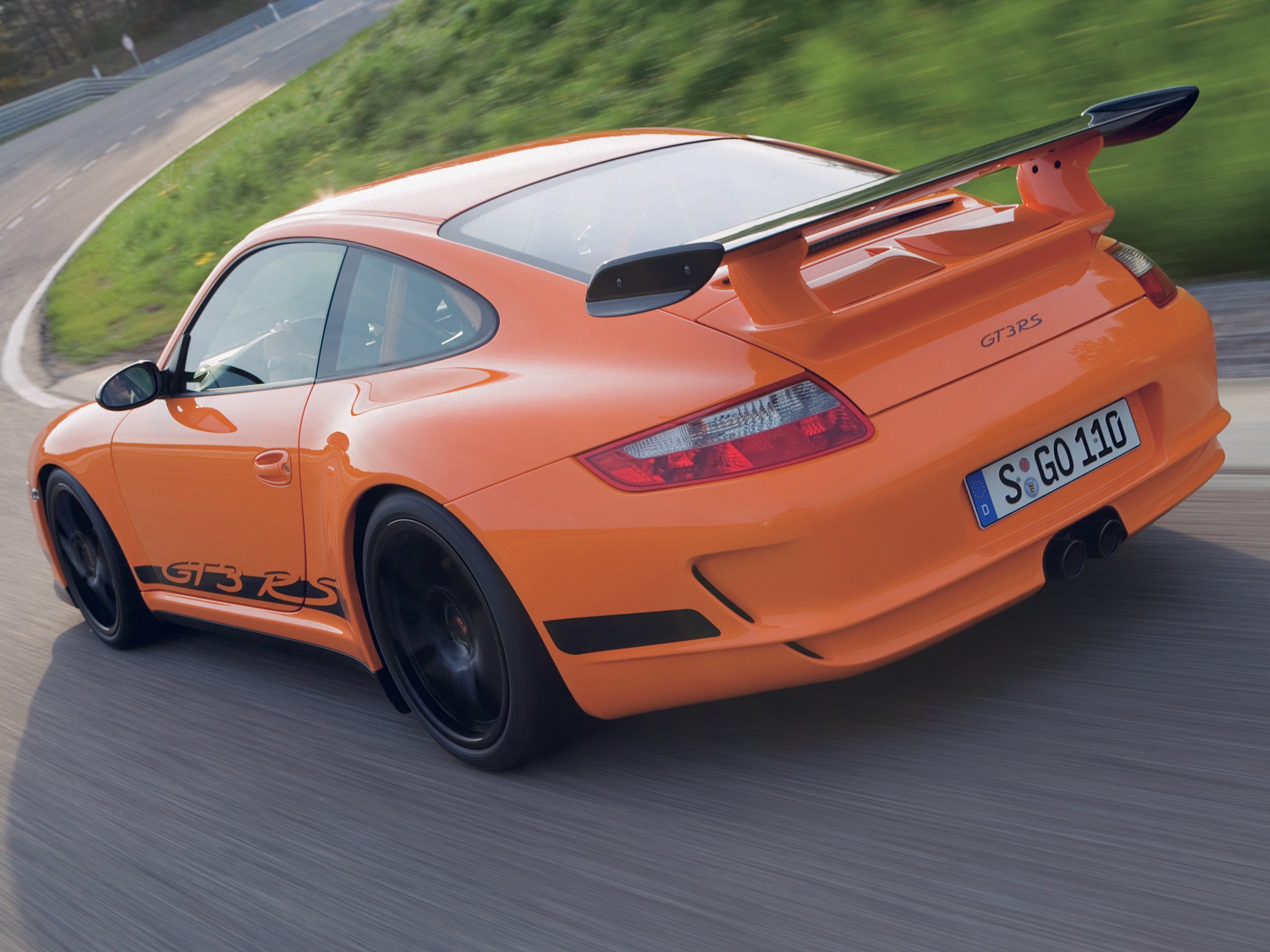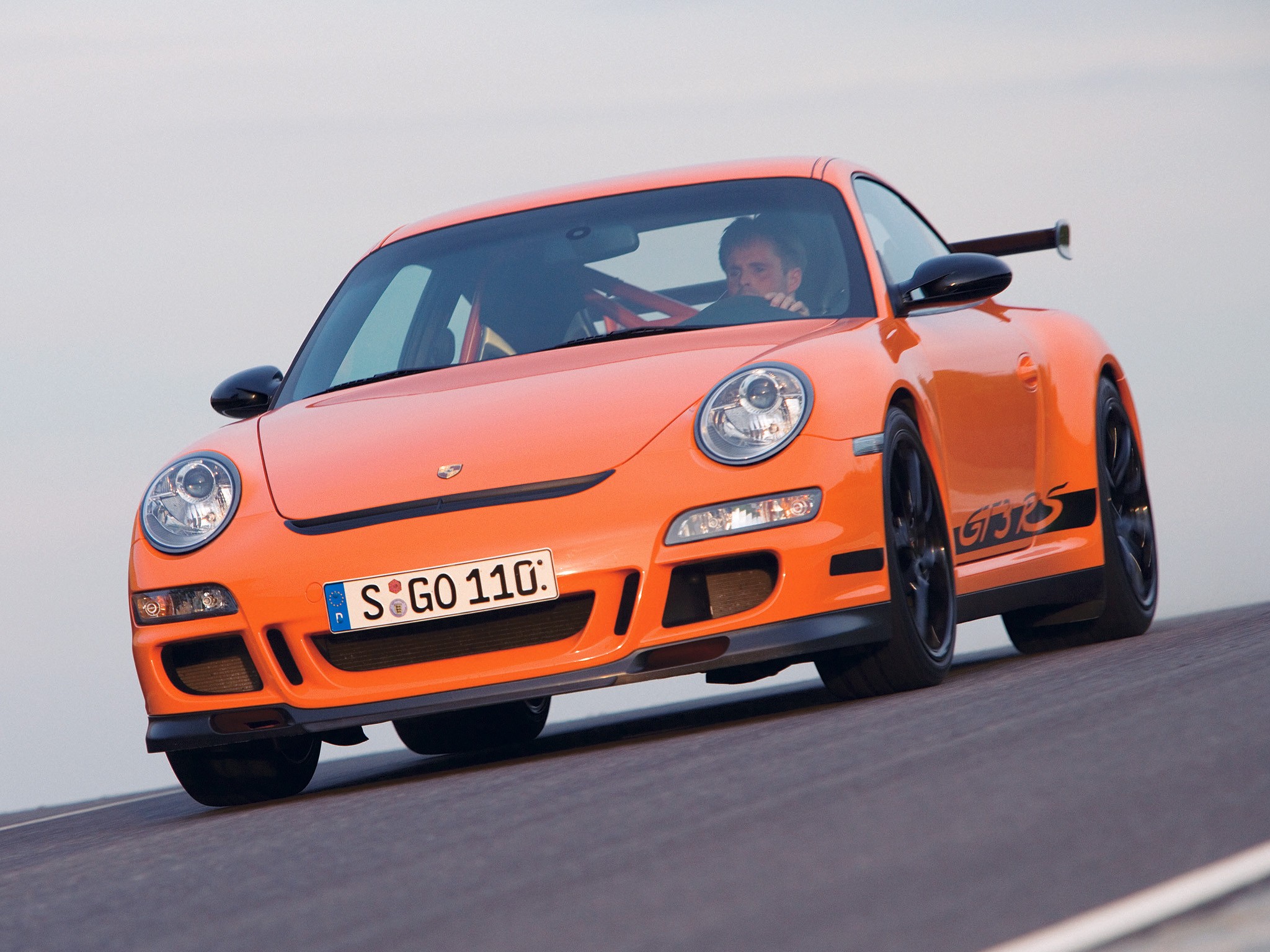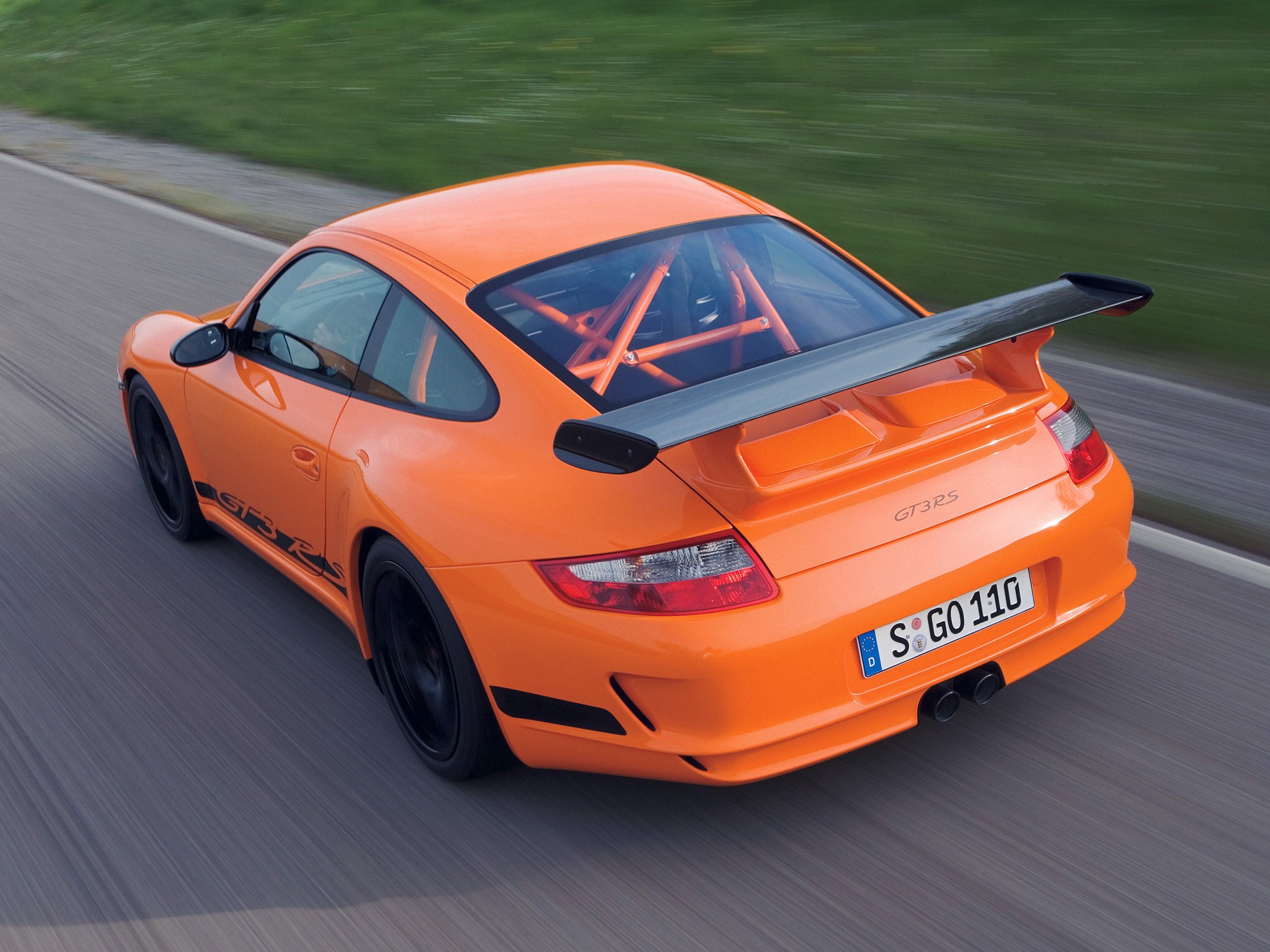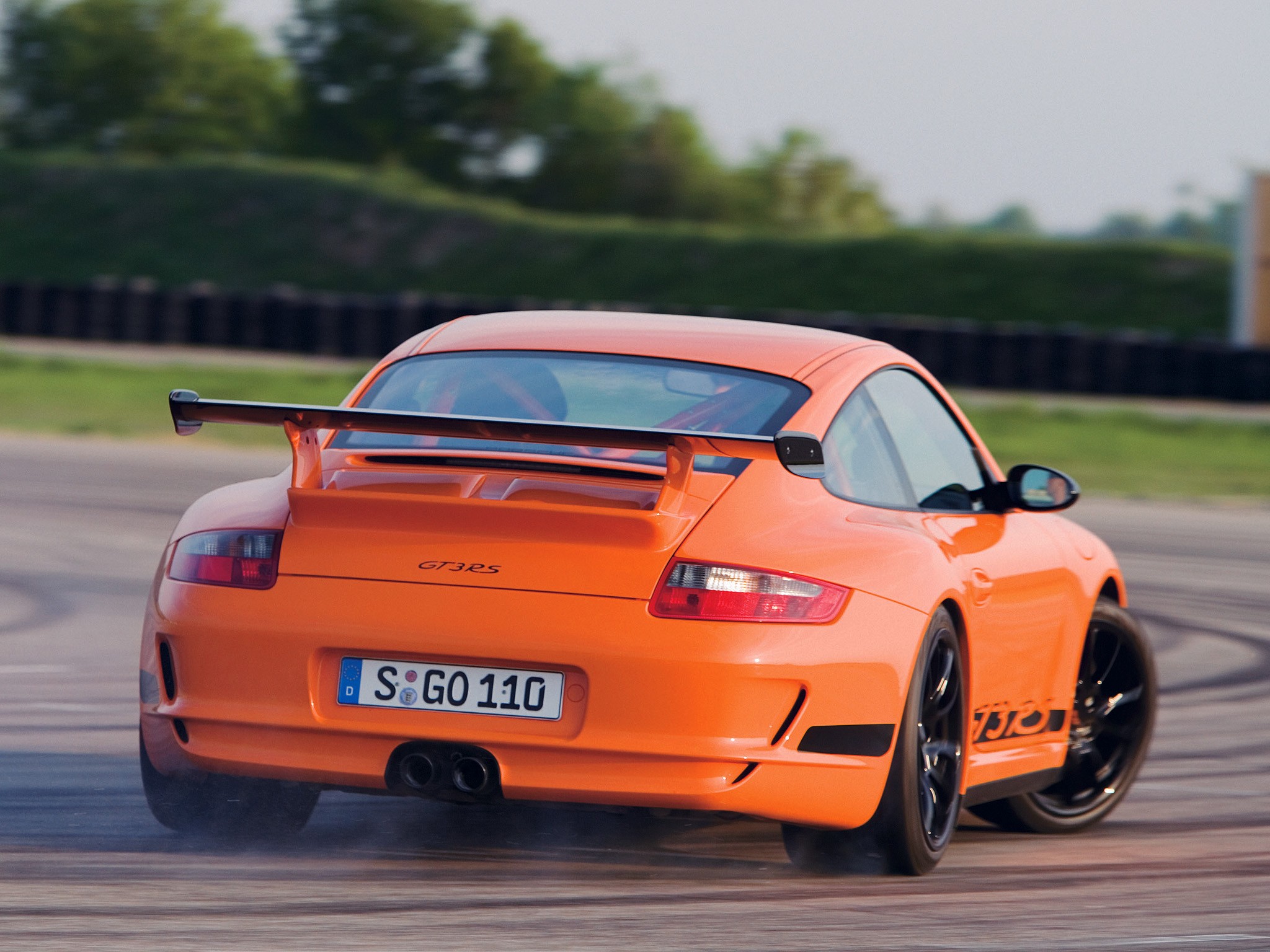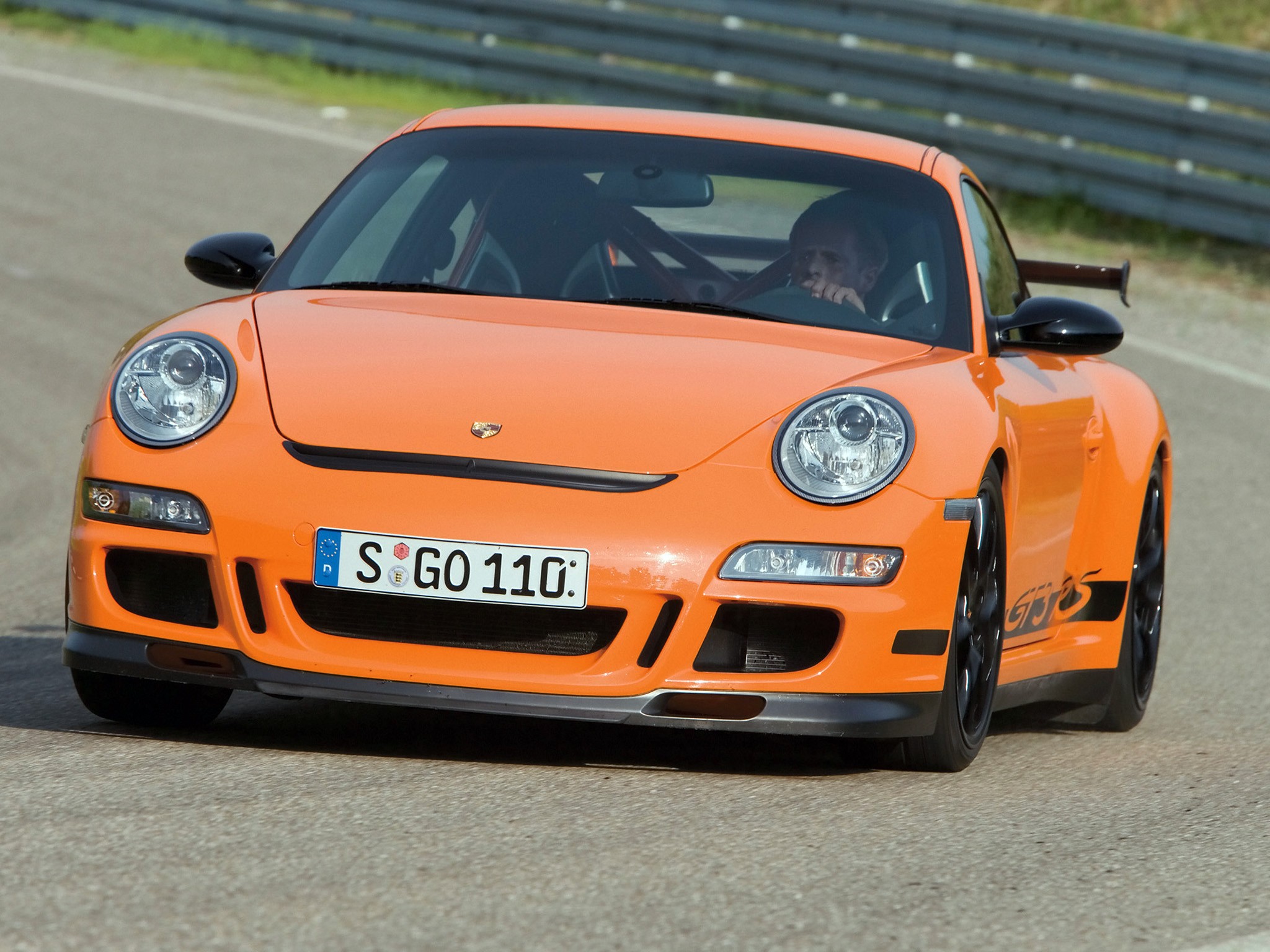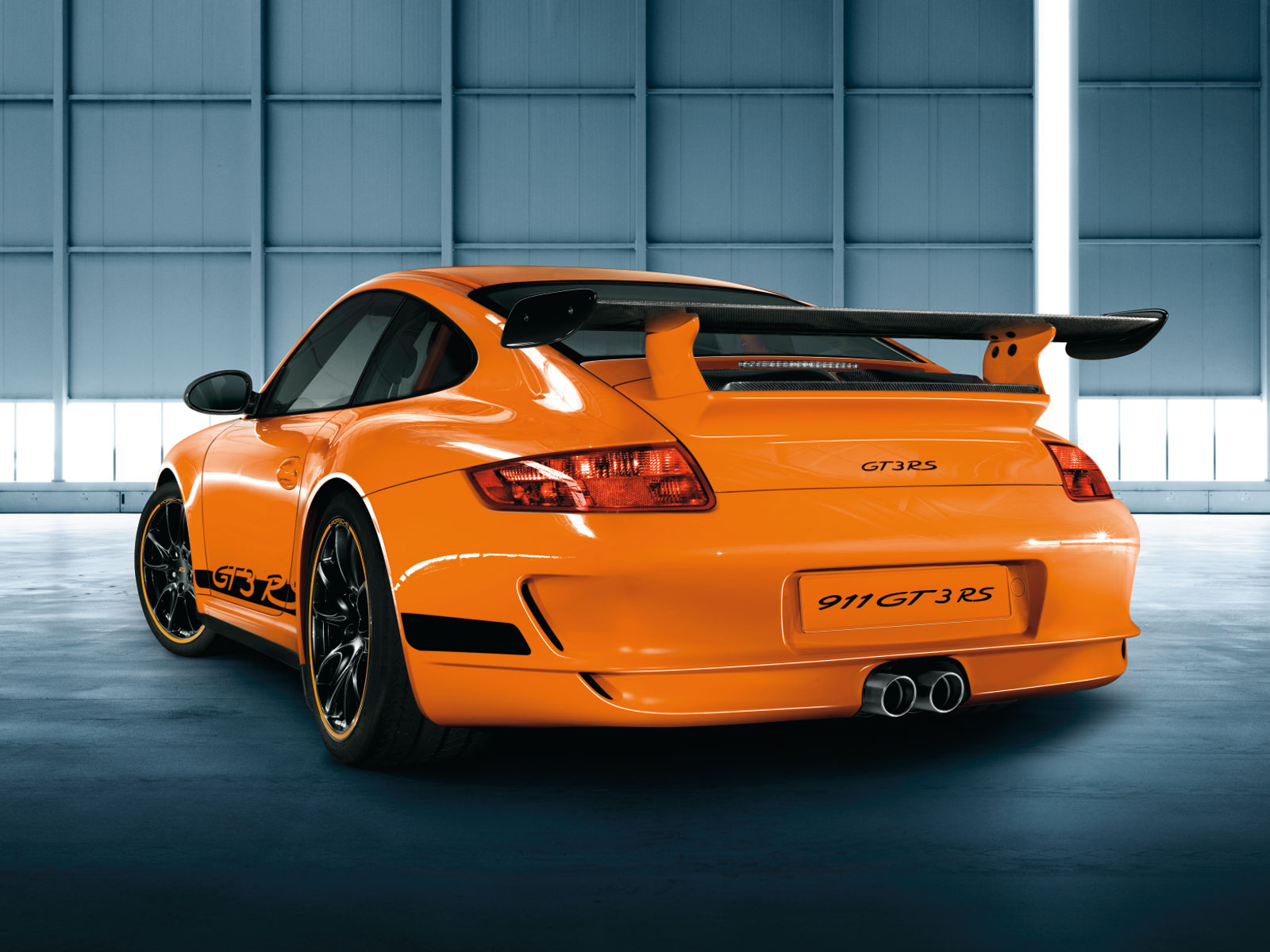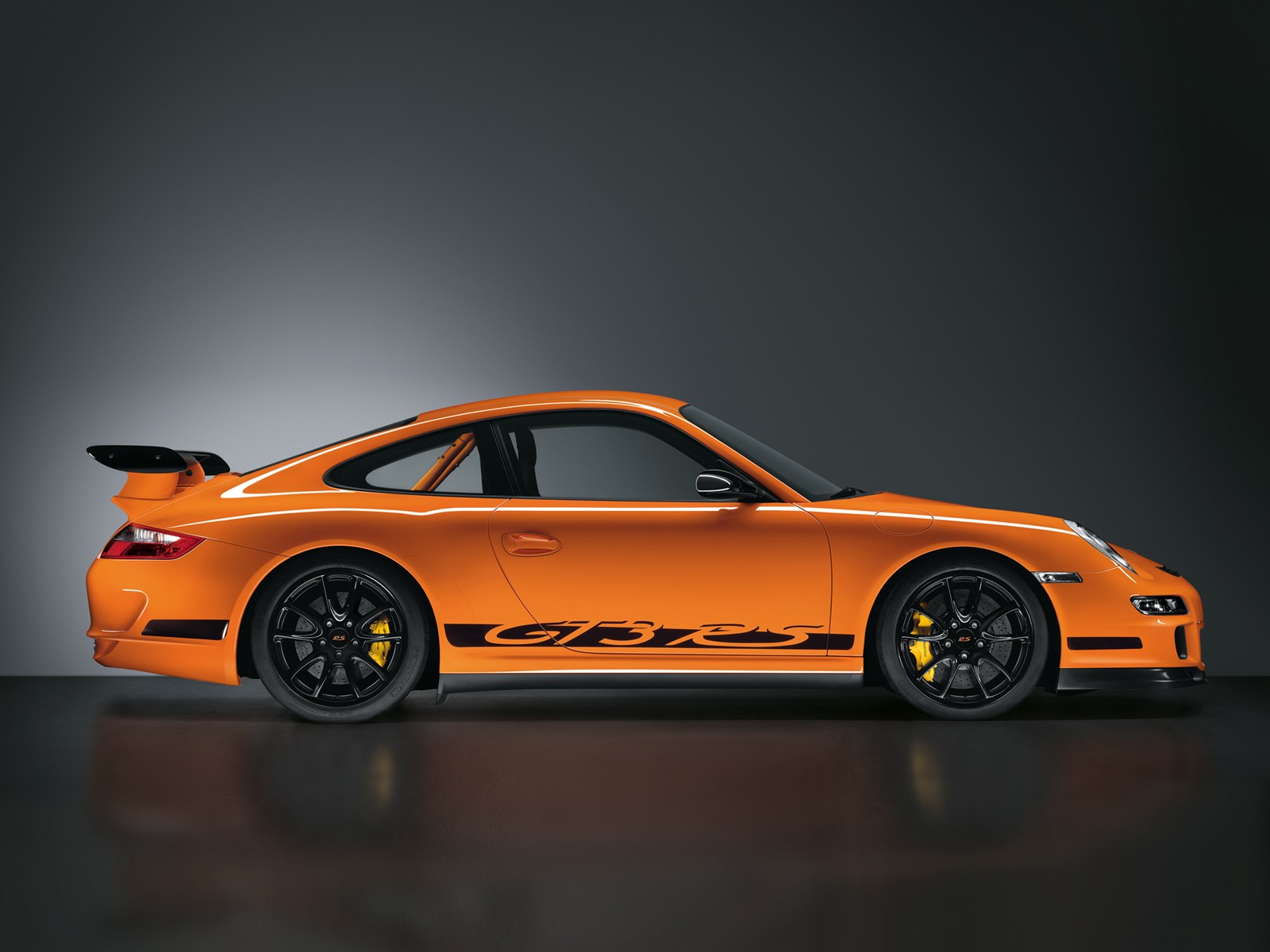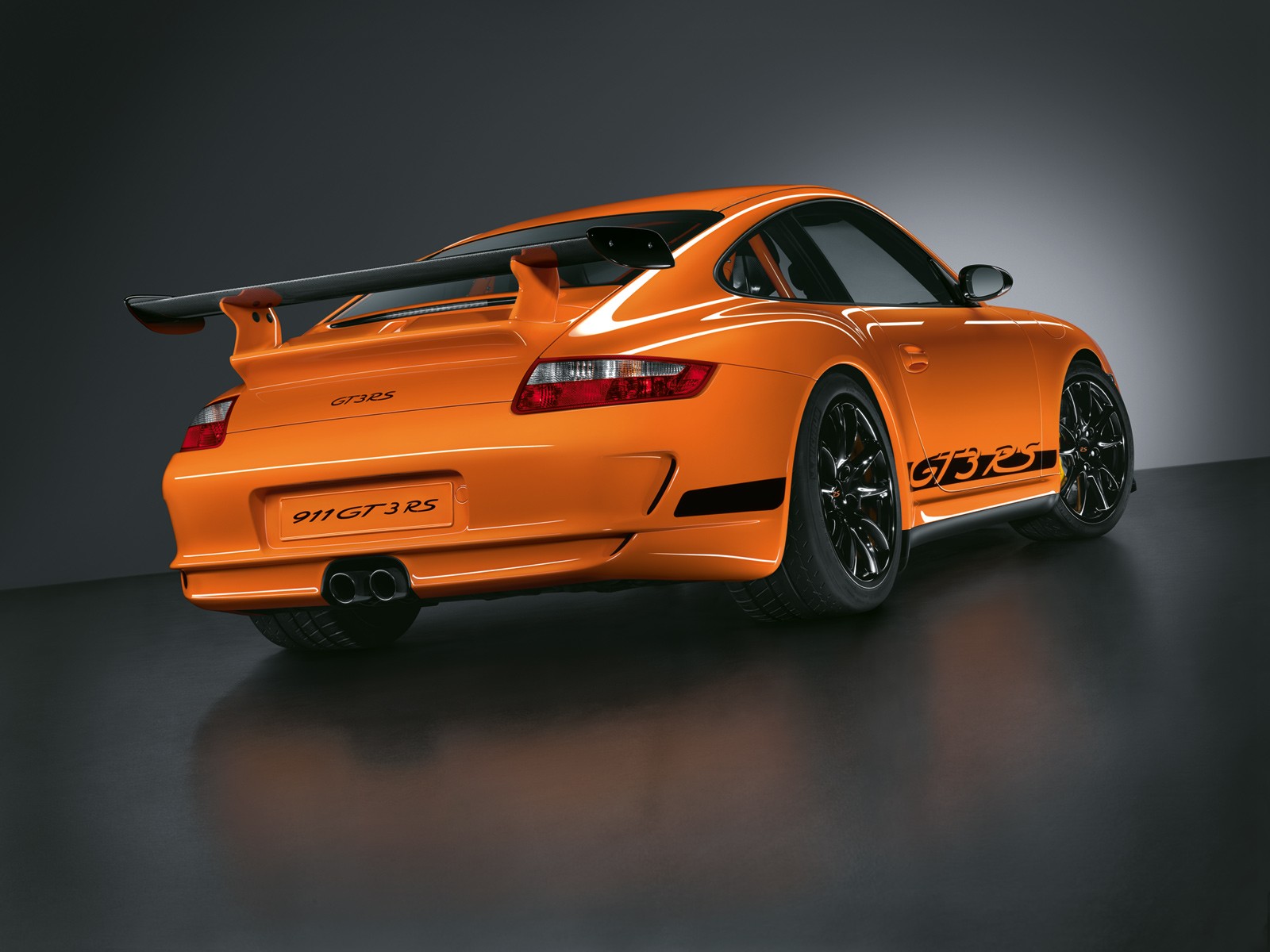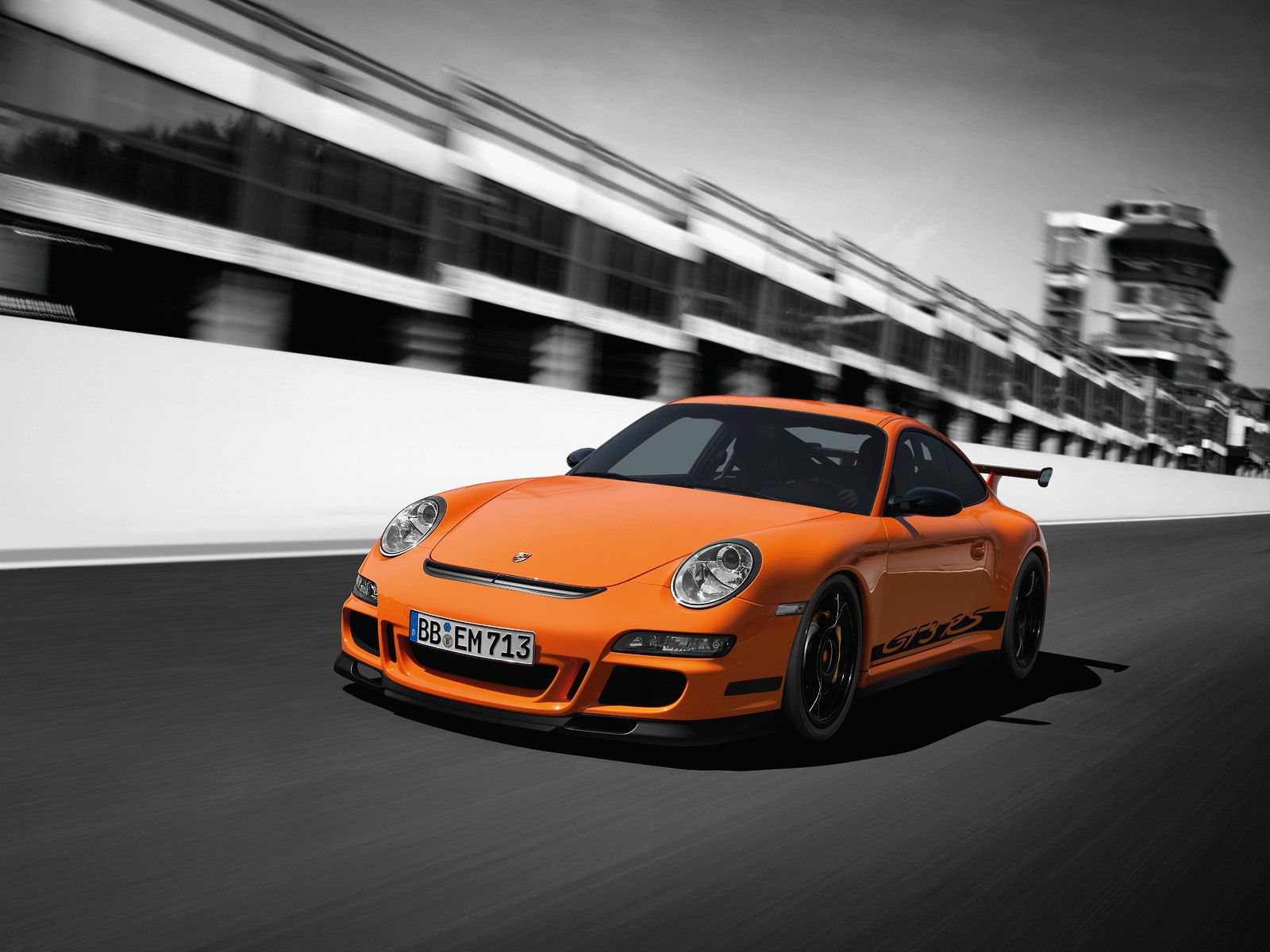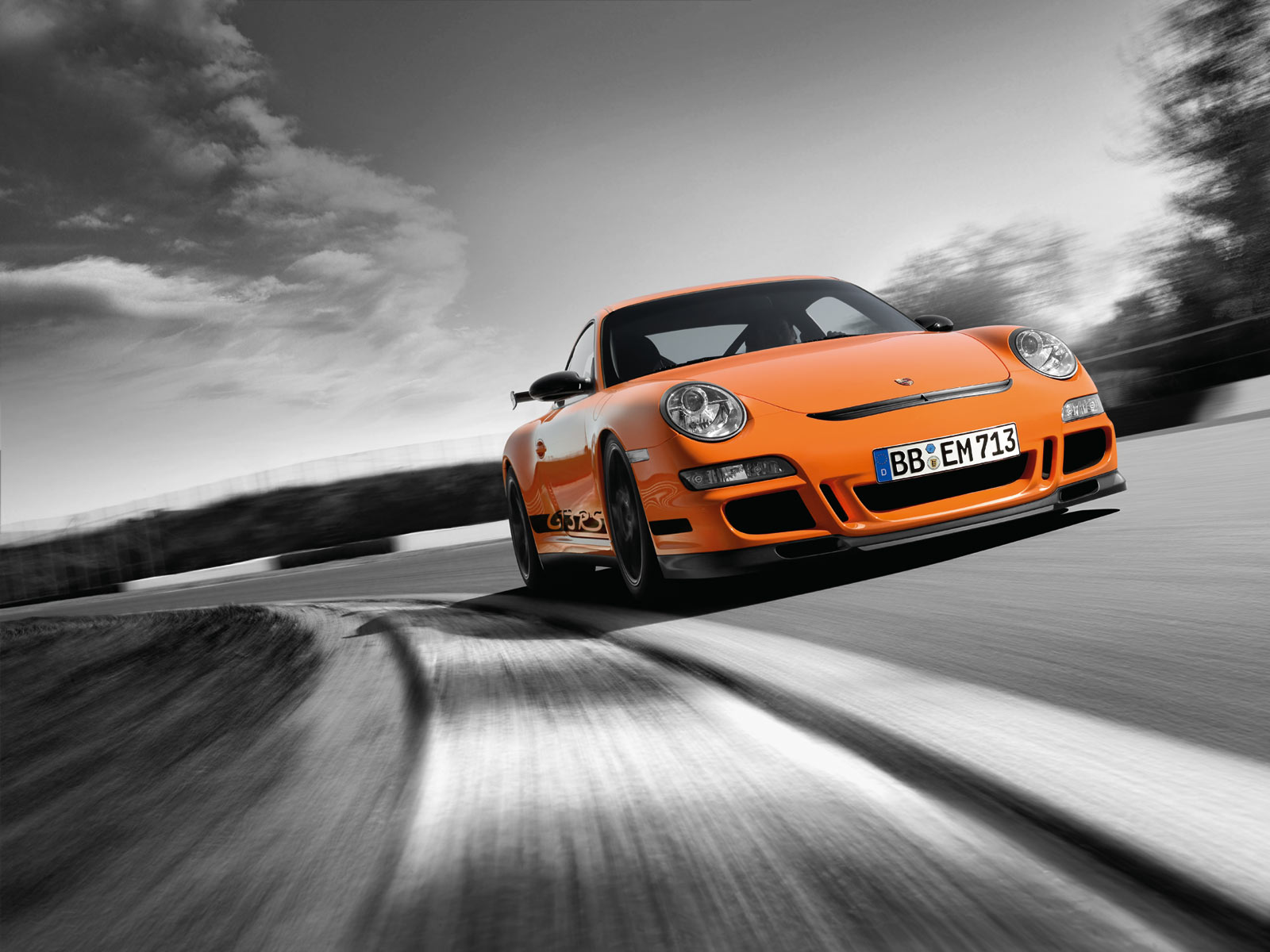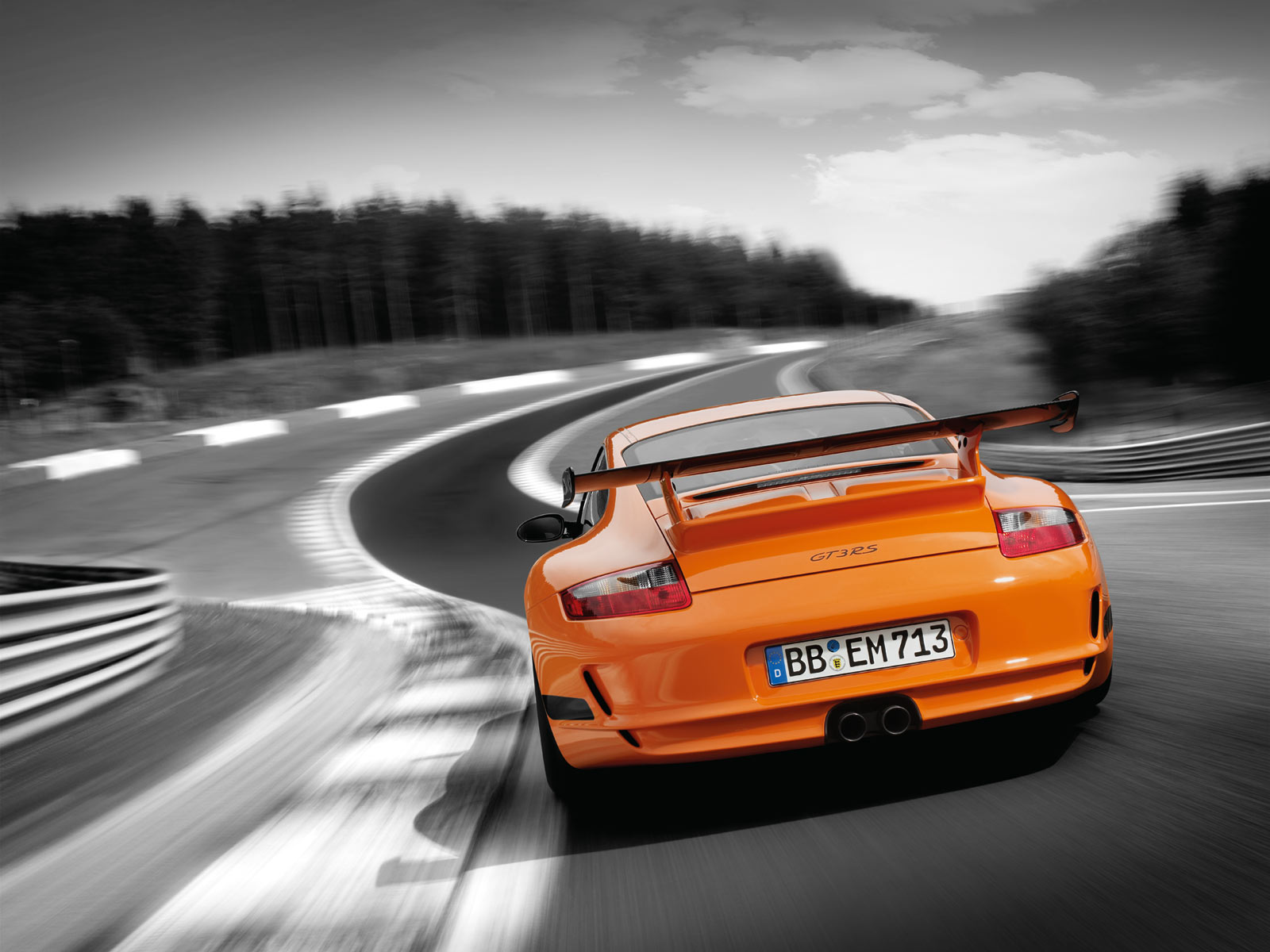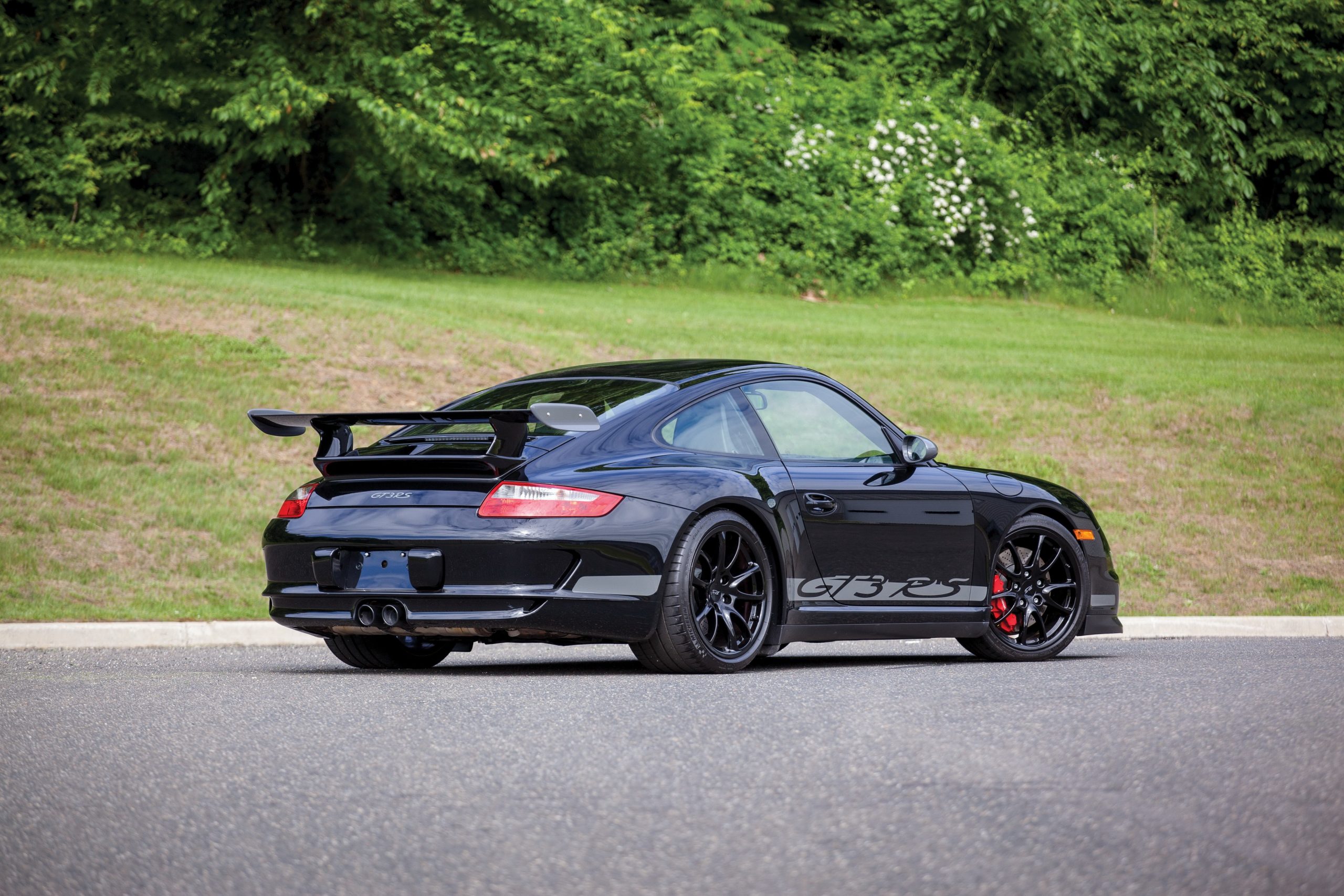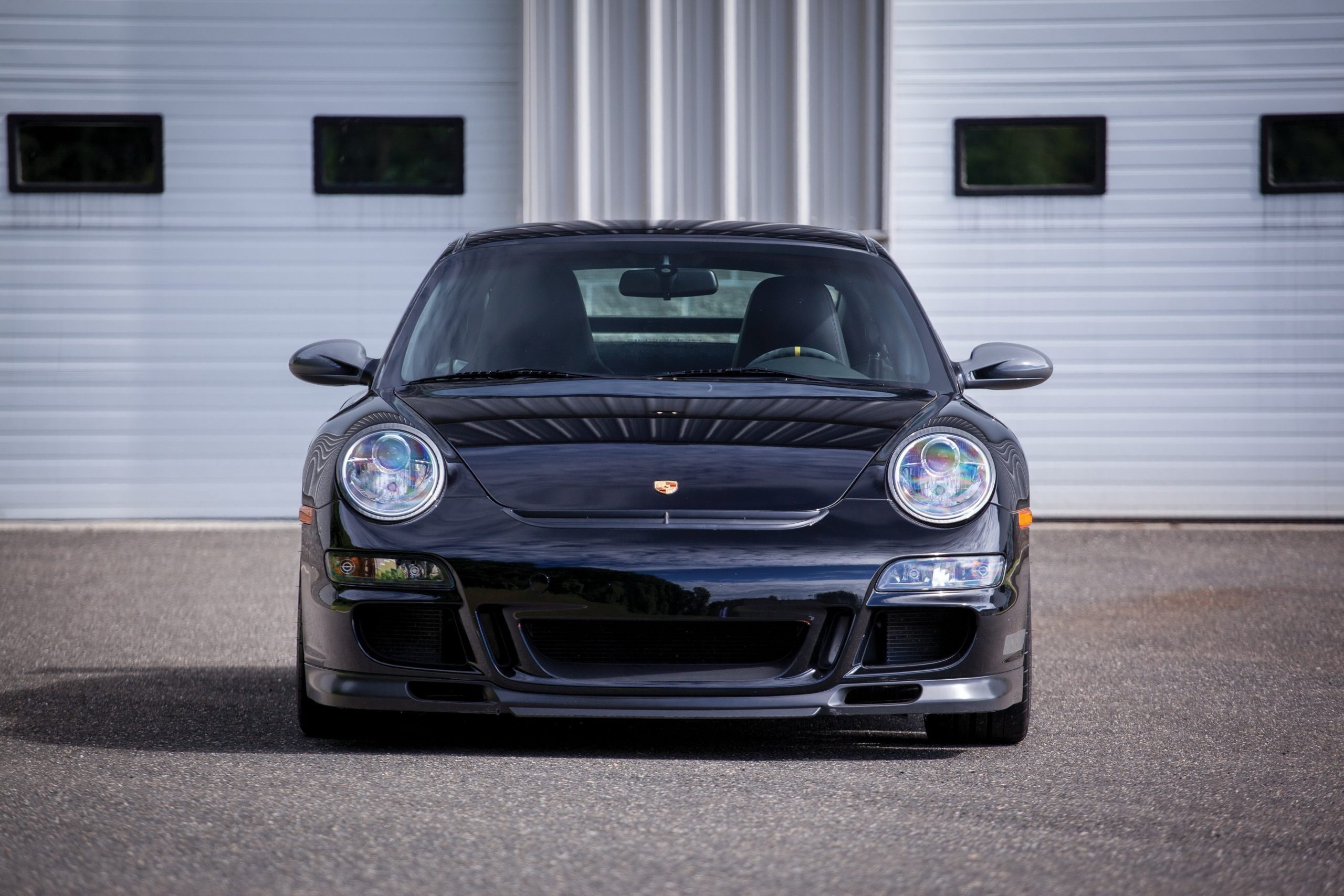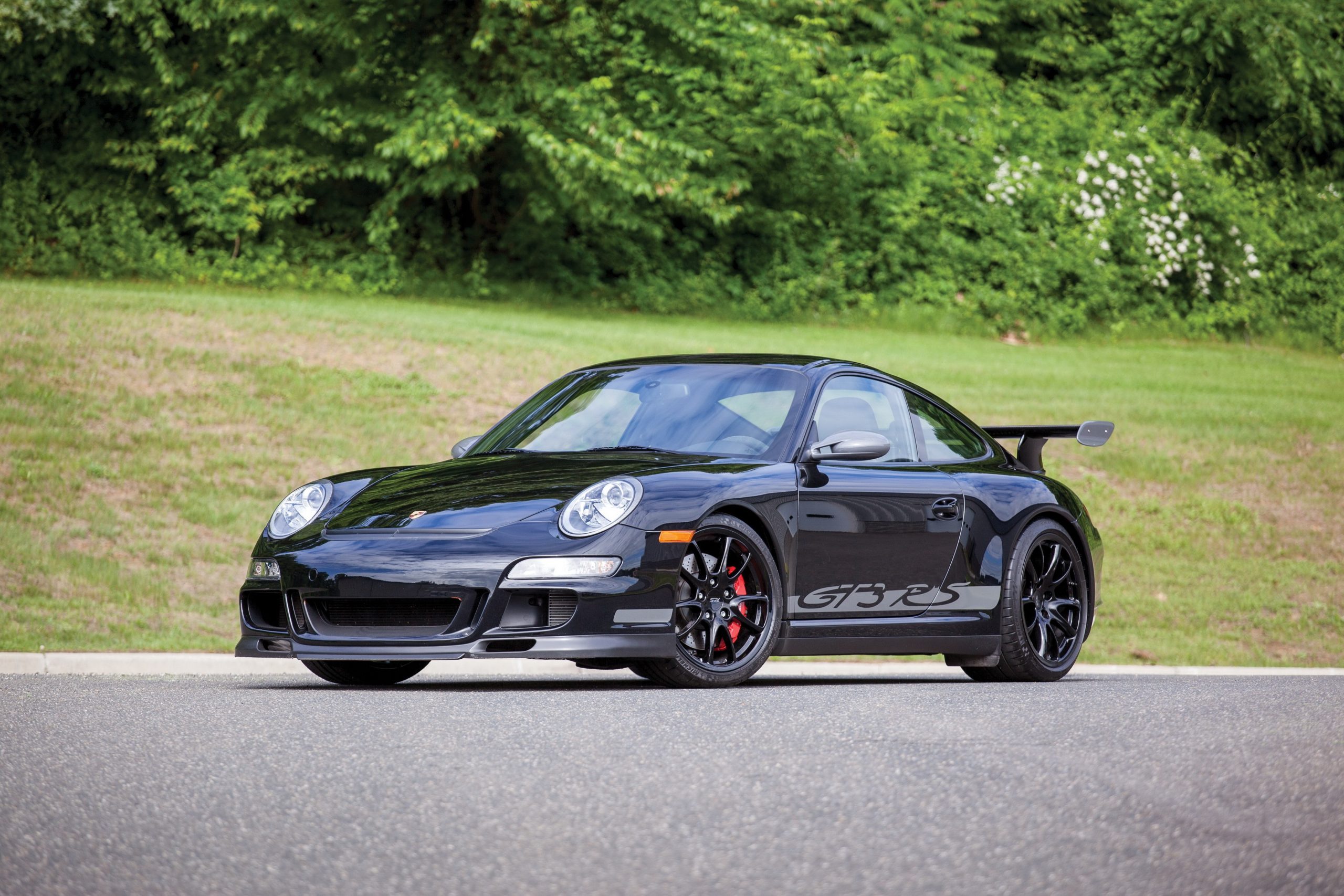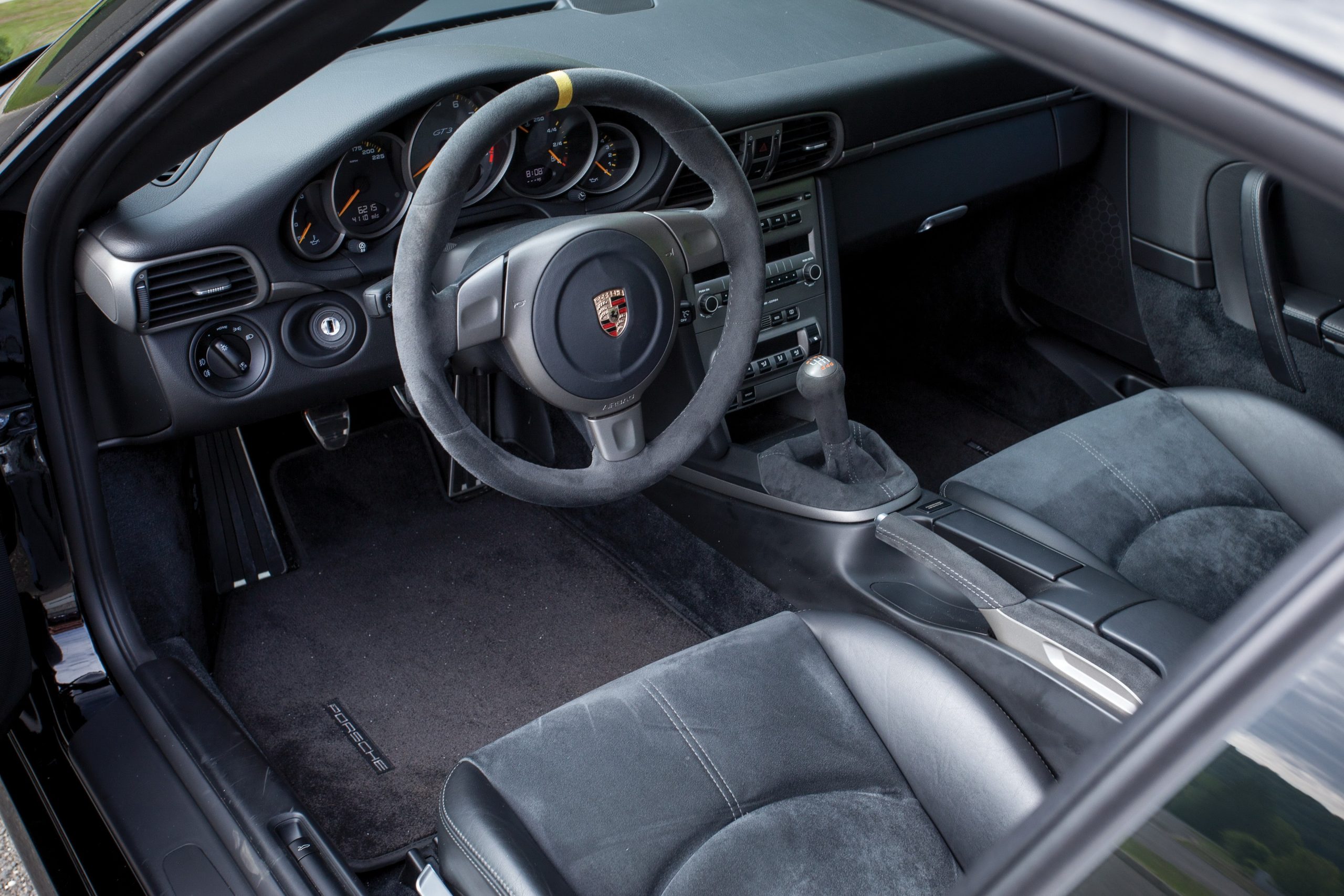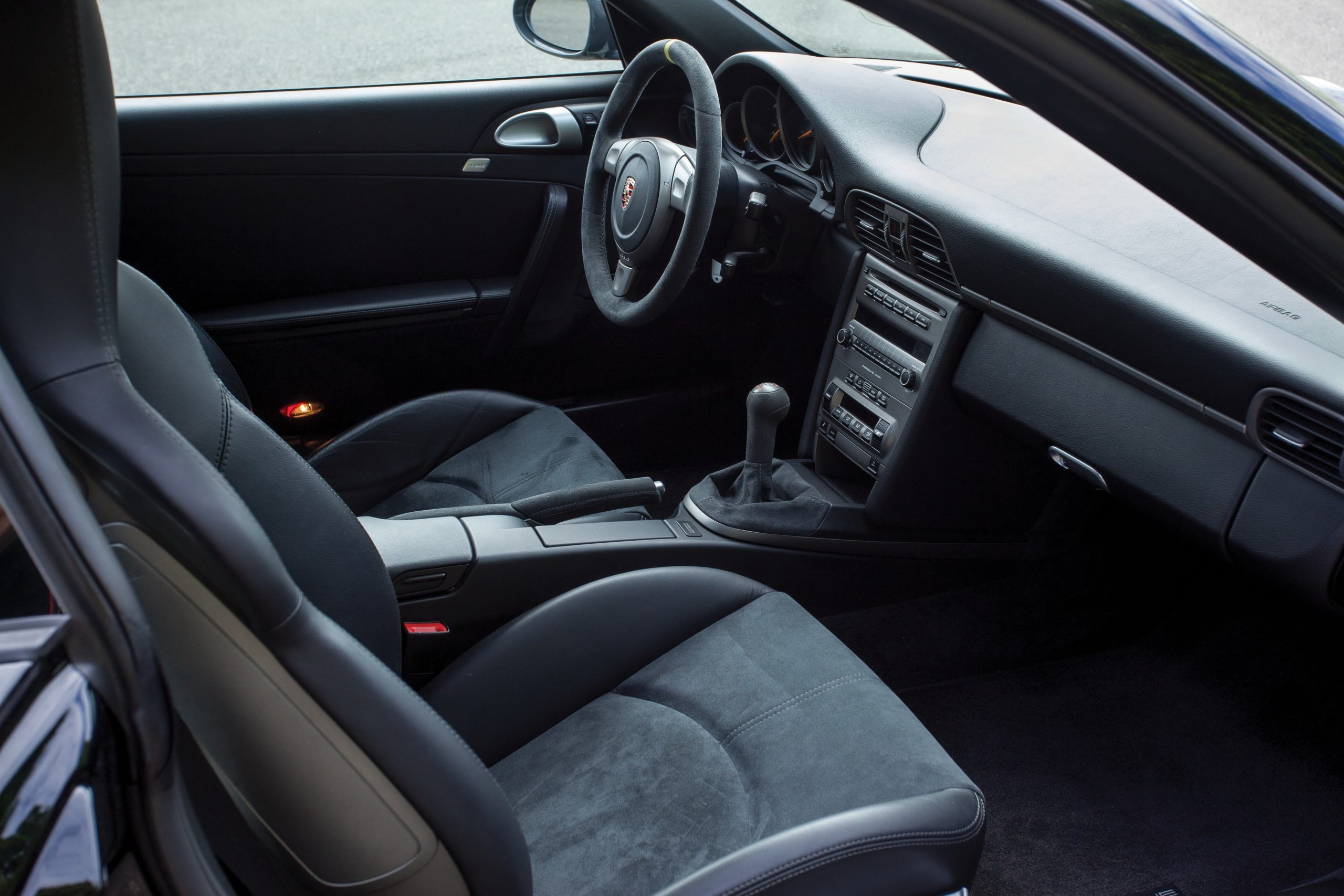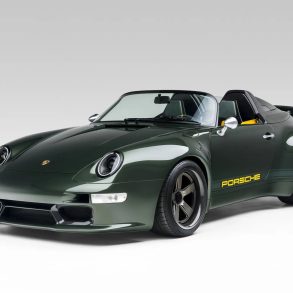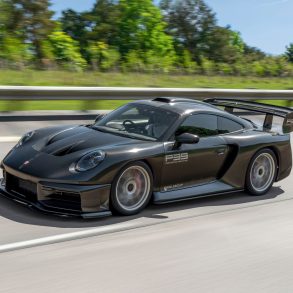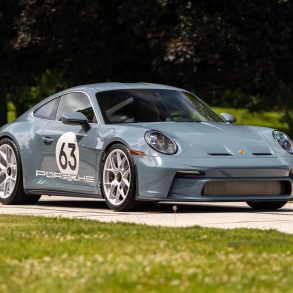(2007 – 2008) Porsche 911 GT3 RS 3.8 (997) – Ultimate Guide
The original 996 GT3 was built to Euro 2 emissions levels only, so all production had to be registered (for European markets) before January 2001, and is also why the model was not offered in the USA, where EPA requirements were ahead of Euro norms. Given the major development programme at Weissach with the Cayenne and the next Boxster/911 generation in the pipeline, it would be three years before Porsche was ready with an updated GT3. The strength of demand for this model, as well as its predecessor, convinced Porsche that even with the 997 launch only a year away, there was a market for a more obviously track-orientated 996 GT3, which in the hallowed Porsche tradition was duly called the GT3 RS.
In a similar vein, the 997 911 GT3 RS is an even lighter and more purist version of the 911 than the standard 997 911 GT3. 20 kilograms lighter than the GT3 and equipped with a close-ratio six speed manual the GT3 RS gets to 60 mph (100 km/h) 1/10th of a second faster than the GT3. The 911 GT3 RS is 44mm wider at the rear than the GT3. The wider track helps improve directional stability when cornering. Weight savings have been made by using plastic for the rear lid, a lightweight plastic rear window and a carbon fiber rear wing. Inside 2 carbon-composite racing bucket seats come as standard. In the Club Sport version there is a bolted roll cage, a six-point harness for the driver and a built in fire extinguisher. Standard exterior color options for the 2007 911 GT3 RS are silver or black, with orange and green as optional colors.
This purist variant of the GT3 is particularly suited for use on the track. The GT3 RS is distinguished by its performance capability and the unadulterated driving experience enjoyed with a racing car, but also meets all requirements for road-legal sports cars.
The exceptionally meaty engine boasts a displacement of 3.6 liters to generate 305 kW (415 bhp) at 7,600 rpm. Maximum revs are reached at 8,400 rpm. The power output per liter of engine capacity is 115.3 bhp. These figures correspond to the present GT3. But the RS puts in an even better performance. Thanks to a close-ratio six-speed transmission with a single-mass flywheel and the 20 kg lower vehicle weight, the engine revs up even more freely, thus enabling the 911 GT3 to sprint from zero to 100 km per hour in 4.2 seconds. That’s one tenth of a second faster than the GT3. It takes just 13.3 seconds to hit to 200 km per hour. Maximum speed is 310 km per hour.
The reference “RS” will quicken the pulse of Porsche connoisseurs. Models such as the legendary Carrera RS 2.7 of 1972 and the type 964 911 RS (1991) were also sports cars that stood out on account of an extreme degree of maneuverability and handling. That tradition is continued with the new 911 GT3 RS. In common with its predecessors, it provides a basic and pre-approval model for use in a range of racing series.
One characteristic of the new “RS” is the body, which is 44 mm wider at the rear (a legacy from the Carrera 4 models) by comparison with the 911 GT3. The muscular-looking rear end conceals a wider track that not only improves directional stability but also increases the transverse acceleration potential of this two-seater coupe.
Despite its specialized body, the “RS” is 20 kg lighter than the GT3, weighing in at just 1375 kg. This weight-saving was achieved by the use, amongst other solutions, of an adjustable carbon fiber wing, the use of a plastic rear lid and a lightweight plastic rear window. The corresponding weight-saving is 4.5 kg/kW.
Road and Track – a 911 GT3 RS, six-speed manual included. The naturally-aspirated flat-six provided 415 hp, with the heavy-duty brakes and cooling required to keep that power flowing all day. It was universally praised as one of the sharpest road cars available.
With a view to the registration regulations for the important Gran Tourismo championships as future fields of application, the road version of the GT3 RS has resorted to technical solutions that will also feature in the racing version. These solutions will include the entire wheel carrier and split wishbones on the rear axle, in addition to the carbon fiber components of the body.
And the interior lives up to the vehicle’s sporting aspirations: 2 lightweight bucket seats made of carbon fiber composite materials come as standard and in the club sports package. There is a bolted roll cage and the pre-wiring for the battery main switch. A six-point seatbelt for the driver and a fire extinguisher are also provided. Internal trims are black, with the roof lining, steering wheel and gear stick trimmed in high-quality Alcantara leather.
The available finishes are Arctic Silver metallic or black; as an option, the GT3 can also be obtained in orange or green. All vehicle insignia and the wheels themselves are styled in orange or black to contrast with the body paintwork.
Pictures
Press Release
The new Porsche 911 GT3 RS offers all the performance and undiluted driving experience of a genuine racing car, but nevertheless fulfils all requirements and standards for a sports car homologated for the road.
A particular highlight of the new RS compared with 911 GT3 is extra body width of 44 millimetres or 1.73″ at the rear. Beneath this muscular rear end lurks the car’s even wider track not only improving roll stability, but also enhancing the lateral acceleration of this thoroughbred two-seater Coupé. And despite its unique body, the Porsche 911 GT3 RS is 20 kilos or 44 lb lighter than the 911 GT3, weighing only 1375 kg kilos or 3032 lb in road trim with a full tank.
This reduction in weight is achieved, inter alia, by the use of an adjustable rear wing made of carbon, an extra-light plastic rear window, and the use of lightweight bucket seats. The car’s power-to-weight ratio, as a result, is just 4.5 kg/kW.
Like the 911 GT3, the 911 GT3 RS is powered by Porsche’s very fast-revving 3.6-litre developing maximum output of 305 kW (415 bhp) at 7600 rpm. Maximum engine speed is 8400 rpm.
Benefiting from its six-speed gearbox with a single-mass flywheel and close gear increments, as well as a reduction in weight by another 20 kilos or 44 lb compared with the GT3, the engine revs up even more spontaneously, with the Porsche 911 GT3 RS accelerating to 100 km/h in a mere 4.2 seconds, one-tenth of a second faster than the 911 GT3. This dynamic acceleration then continues in just 13.3 seconds overall to 200 km/h or 124 mph. And top speed, finally, is 310 km/h or 192 mph.
Inspired by motorsport
Looking at the homologation rules for major Gran Tourismo championships as the car’s major domain, we see that the Porsche 911 GT3 RS in road trim comes with technical solutions also to be found in future on the racing version. Apart from carbon-fibre components on the bodyshell, these include the complete wheel support subframe as well as the split track control arms on the rear axle.
The interior also reflects the car’s sporting ambitions, two lightweight composite carbon-fibre bucket seats as well as the Clubsport package naturally coming as standard. The Clubsport package is made up of a bolted rollcage and a preliminary kit for fitting the main battery switch.
Further features, finally, are a six-point seat belt for the driver as well as a fire extinguisher.


